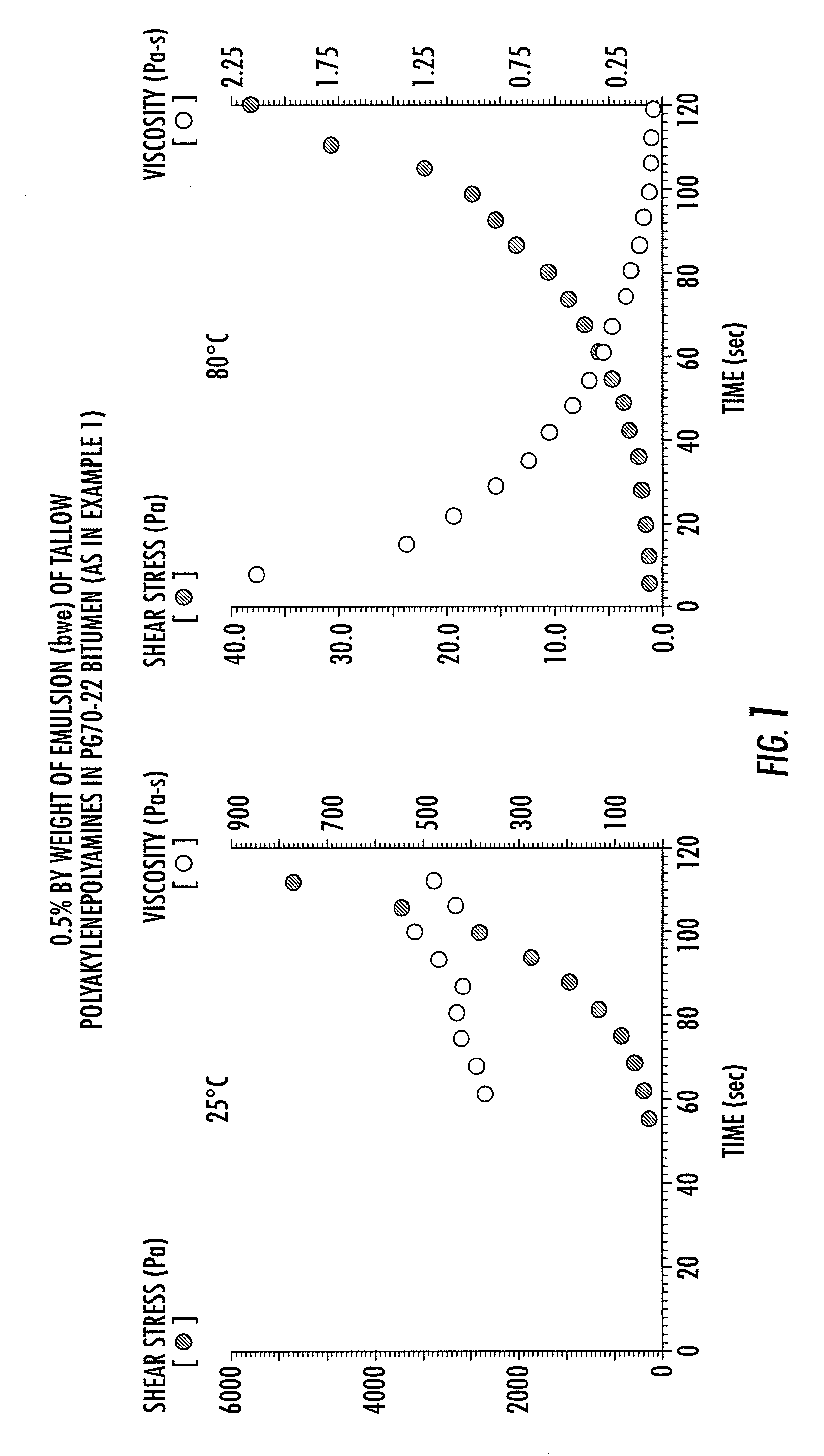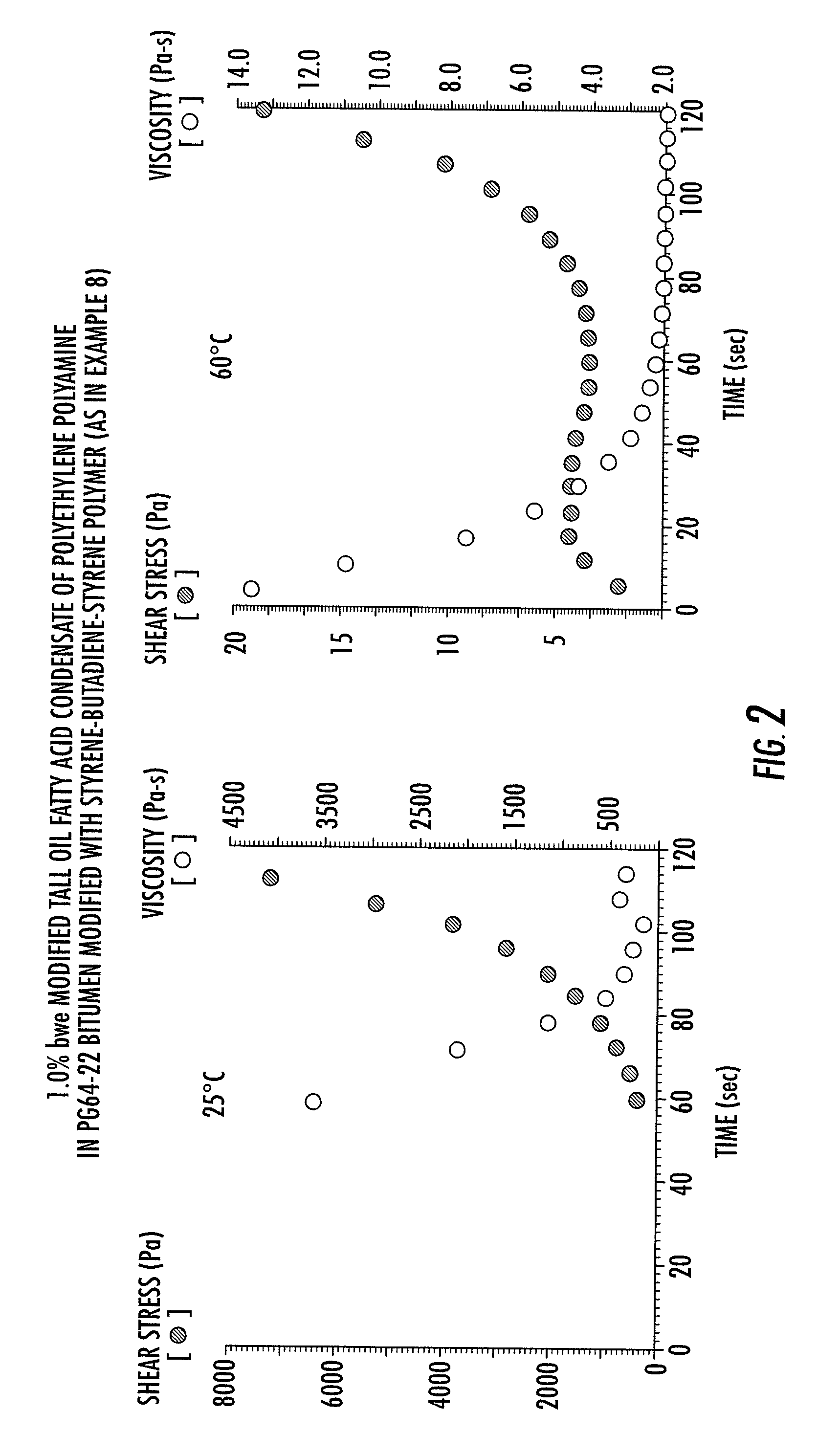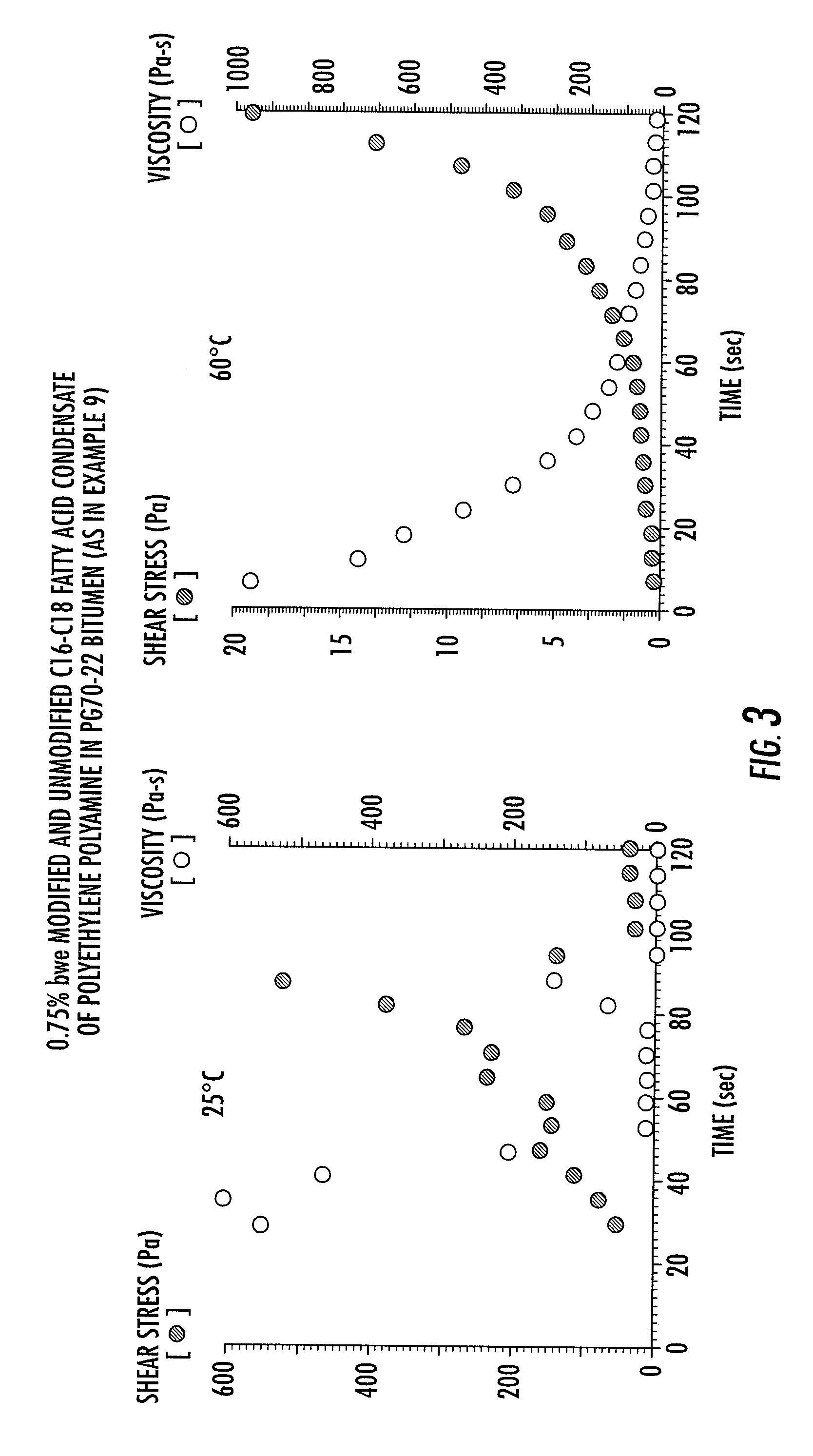Method for producing bituminous compositions
a technology of composition and bitumen, applied in the direction of single unit paving, roads, roads, etc., can solve the problems of lack of control of the timing of ph-shifting chemistry, low cure and strength value, high air voids, etc., and achieve low interfacial viscosity, high interfacial bitumen solubility, and low marangoni effect
- Summary
- Abstract
- Description
- Claims
- Application Information
AI Technical Summary
Benefits of technology
Problems solved by technology
Method used
Image
Examples
example 1
[0069] Bituminous compositions of the present invention were prepared by the following procedure. Solvent-free bitumen emulsions were prepared using one of three different emulsifiers (A, B, and C) based on alkyl polyamines at dosages ranging from 0.3% to 0.5% by total weight of the respective bitumen emulsion. Emulsifier A was a blend of 0.4% by total weight of the bitumen emulsion (bwe) of saturated and unsaturated C16-C18 tallow tripropylenetetramines and 0.1% bwe of saturated and unsaturated C16-C18 tallow monoamines. Emulsifier B was 0.3% bwe of saturated and unsaturated C16-C18 tallow polypropylenepolyamine blends. Emulsifier C was a blend of 0.45% bwe of alkyl polypropylenetetramine and 0.01%-0.05% bwe of a mixture of saturated and unsaturated C16-C18 alkyl monoamines, -diamines, and -triamines. The respective emulsifiers were dissolved in warm water and treated with hydrochloric acid solution to lower the pH to 2.0. The aqueous solution of emulsifier(s) in water (called the ...
example 2
[0081] The physical and performance properties of bituminous compositions made using the method of the present invention were also compared to the properties of bitumen and aggregate mixes made according to traditional hot mix asphalt methodologies. All bituminous compositions in this example contained commercially-available, performance-grade PG70-22 bitumen, and were prepared with a bitumen content of 4.8% by total weight of the graded aggregate.
[0082] Bituminous compositions of the present invention were prepared by the following procedure. Solvent-free bitumen emulsions were prepared using tallow polyalkylenepolyamines emulsifier at 1.0% by total weight of the bitumen emulsion (bwe). The emulsifier was dissolved in warm water and treated with hydrochloric acid solution to lower the pH to 2.0. The aqueous solution of emulsifier(s) in water (called the “soap solution”) was heated to 55° C. and added to an Atomix colloid mill.
[0083] The bitumen employed in this example was a comm...
example 4
[0098] Bituminous compositions of the present invention were produced and compacted using the procedure of Example 2. Solvent-free bitumen emulsions were prepared using alkyl alkylenepolyamine emulsifiers at dosages ranging from 1.0% to 0.5% by total weight of the bitumen emulsion (bwe). The bitumen employed in this example was a commercially-available, performance-grade unmodified PG64-22. All of the bituminous compositions in this example contained this PG64-22 bitumen, and each was prepared with a bitumen content of 4.8% by total weight of the graded aggregate.
[0099] For comparison purposes, cold mix bituminous compositions were produced having equivalent aggregate gradation and bitumen content. The procedure for the production of the bituminous composition of the present invention noted above was followed for producing these cold mix bituminous compositions with the exception that the bitumen emulsion and the graded aggregate were each at ambient room temperature (23° C.) when ...
PUM
| Property | Measurement | Unit |
|---|---|---|
| temperature | aaaaa | aaaaa |
| temperature | aaaaa | aaaaa |
| temperature | aaaaa | aaaaa |
Abstract
Description
Claims
Application Information
 Login to View More
Login to View More - R&D
- Intellectual Property
- Life Sciences
- Materials
- Tech Scout
- Unparalleled Data Quality
- Higher Quality Content
- 60% Fewer Hallucinations
Browse by: Latest US Patents, China's latest patents, Technical Efficacy Thesaurus, Application Domain, Technology Topic, Popular Technical Reports.
© 2025 PatSnap. All rights reserved.Legal|Privacy policy|Modern Slavery Act Transparency Statement|Sitemap|About US| Contact US: help@patsnap.com



